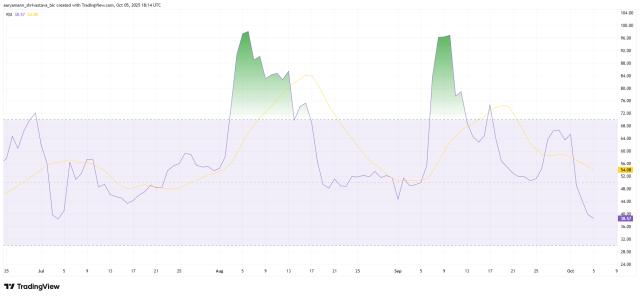Original text: " A deep dive on Solana , a high performance blockchain network "
Author: Mustafa Bedawala, Arjuna Wijeyekoon
Compiler: How is Odaily Odaily husband?
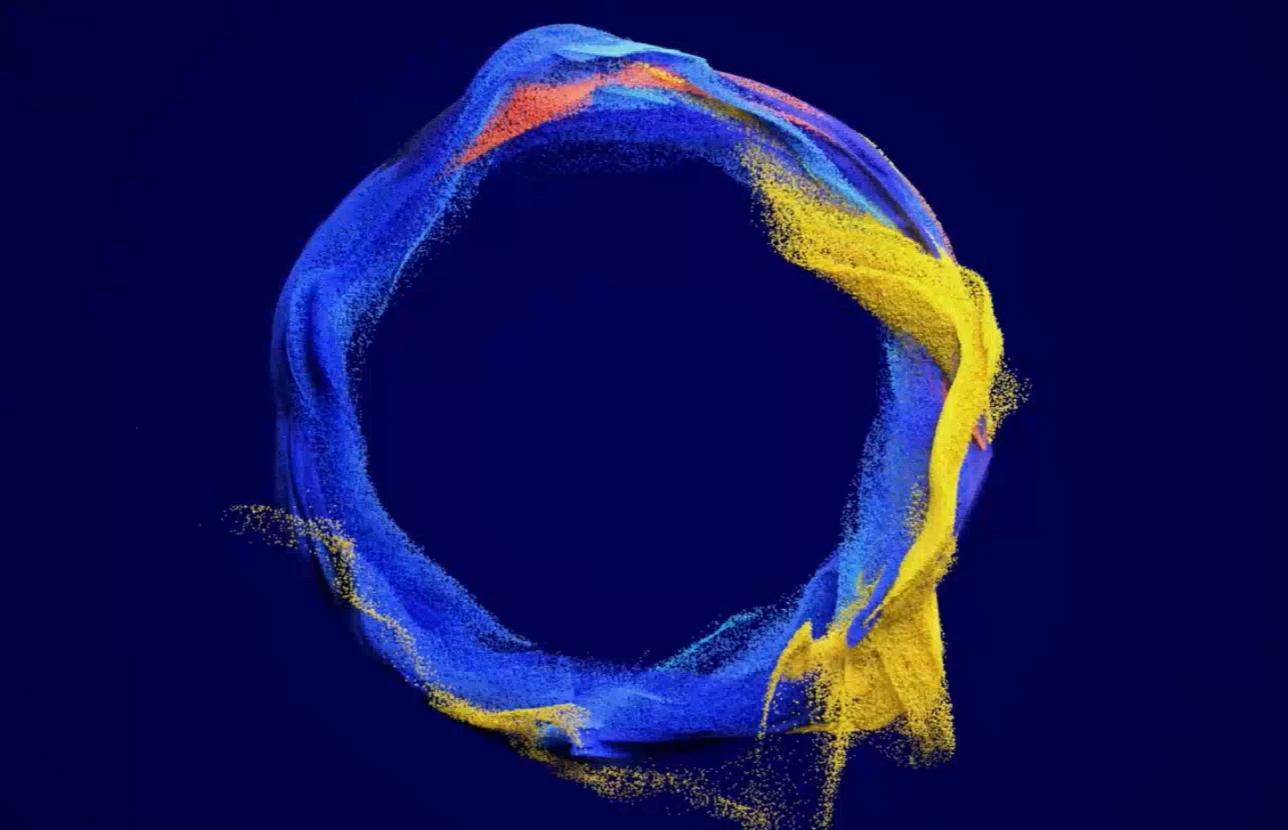
As the FTX incident continues to ferment, Solana returns to the public eye from time to time.
Data shows that although the number of daily active addresses on the Solana network hit a new low this year, TVL increased by more than 150% from the beginning of the year. At the same time, MakerDao is also moving to Solana, and last week Visa selected Solana as the public chain for its pilot transaction USDC. Solana, who has gone through many ordeals, seems to be coming back to life.
Of course, the above does not mean that Solana has the ability to compete with the "multi-L2 universe with Ethereum as the core", but perhaps everyone's patience with the "King of Public Chains" is more limited. Visa, which has piloted both Ethereum and Solana, recently published a research report on Solana, explaining Solana’s high throughput, low cost, and strong node base.
Odaily Odaily now compiles the essence of the paper as follows.
Blockchain networks have been proposed as new innovative payment channels. However, for years they have struggled to scale and meet the secure, high-throughput and low-cost transaction features that consumers have come to expect. Over the past year, we at the Visa team have been closely following the technological innovation behind blockchain scalability and are encouraged by the significant progress being made with new L2 networks on Ethereum, as well as alternative blockchain networks built from the ground up. .
Our goal is to gain a deep understanding of the technical properties of blockchain and try to leverage them to help enhance our existing networks and build new products for commerce and money movement.
While we believe the payments ecosystem will likely use multiple blockchain networks, we believe the Solana blockchain network has the potential to be one of the networks that helps drive mainstream payments processes. Due to its speed, scalability, and low transaction costs, Solana has the potential to meet payment needs, helping to establish it as a good choice for efficient blockchain settlement channels using stablecoins like USDC. The Solana blockchain network combines a number of key features and novel innovations that are worth exploring in depth for anyone interested in payments technology.
Visa-scale transaction throughput
As a global payments network, Visa has the ability to execute more than 65, 000 transactions per second. While Solana doesn't yet execute transactions at the scale of Visa, Solana processes an average of 400 user-generated transactions per second (TPS), often surging to over 2,000 user-generated TPS during periods of peak demand. This is a significant level of throughput, making it suitable for testing and pilot payment use cases. In comparison, the average TPS for Ethereum is around 12 and for Bitcoin it is 7.
Parallel transaction processing
As a foundation for its high transaction throughput design, Solana can process transactions in parallel, helping to greatly increase the efficiency of the network. Transactions affecting different accounts can be executed simultaneously, enabling Solana to effectively support payment and settlement scenarios that primarily occur between two parties or where a single payment is made to many other parties.
In Solana, smart contracts can also be executed in parallel. Transactions specify the state or account they interact with, allowing validators to run non-conflicting transactions simultaneously. Unlike other chains such as Ethereum that use a single-threaded model, Solana uses a multi-threaded approach to achieve parallel transaction execution . Simply put, while blockchains like Bitcoin and Ethereum process transactions sequentially, Solana’s architecture allows multiple transactions to be processed simultaneously. This design helps prevent congestion in one part of the network from impacting overall network performance.
Low and predictable transaction costs help drive payment efficiency
As for costs, Solana’s transaction fees are not only affordable (usually less than $0.001), but also predictable. This low cost and predictability make it an attractive network to enhance the efficiency and cost savings of existing payment operations.
In the chart below, Solana clearly stands out from a cost perspective compared to Bitcoin and Ethereum, whose transaction fees can fluctuate unpredictably based on the demand for transactions performed on the network. Networks with unpredictable transaction costs can be more difficult for payments companies to manage in their products and can lead to a confusing consumer experience .
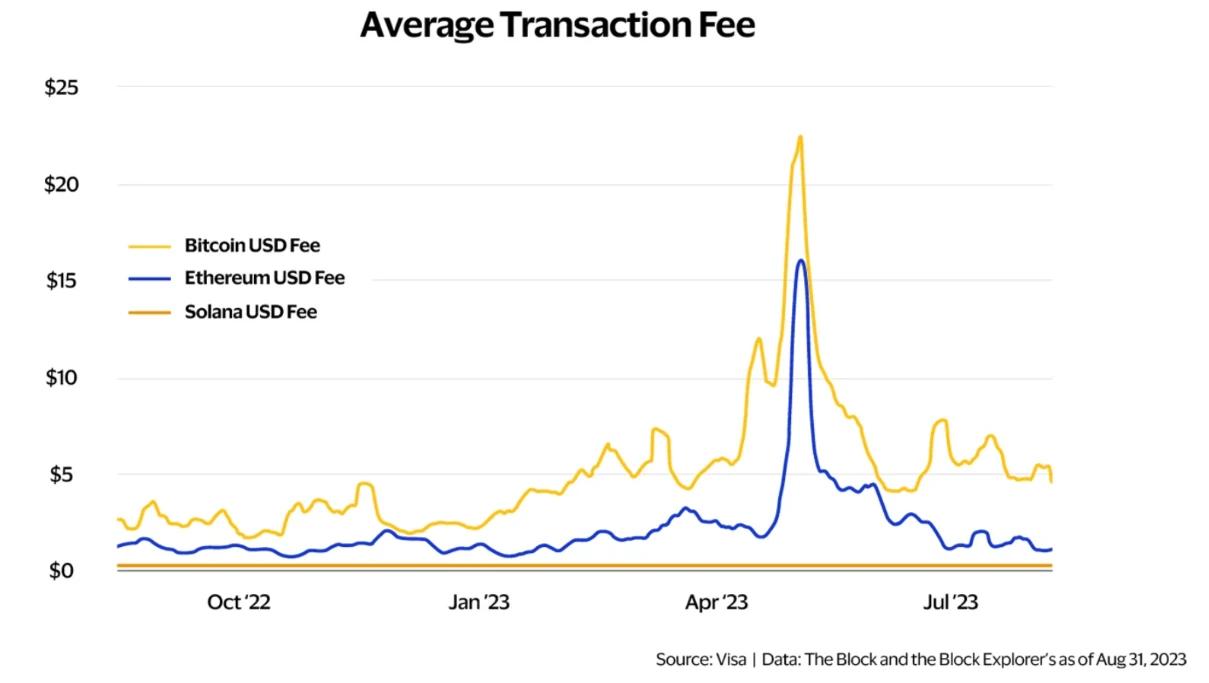
Achieve cost predictability through localized fee markets
Solana’s localization fee marketplace is unique among blockchains. This innovation is closely tied to Solana’s parallel processing capabilities, where non-overlapping transactions are executed on different threads, just like vehicles traveling on different roads. Network congestion is a significant reason why other blockchain networks may experience increased fees, which can negatively impact the entire system. The popularity of an NFT release could increase network congestion, making simultaneous consumer P2P transactions more expensive or even economically unfeasible. The chart below is a comparison of the fee market (Solana vs. Ethereum and other gas-based networks).
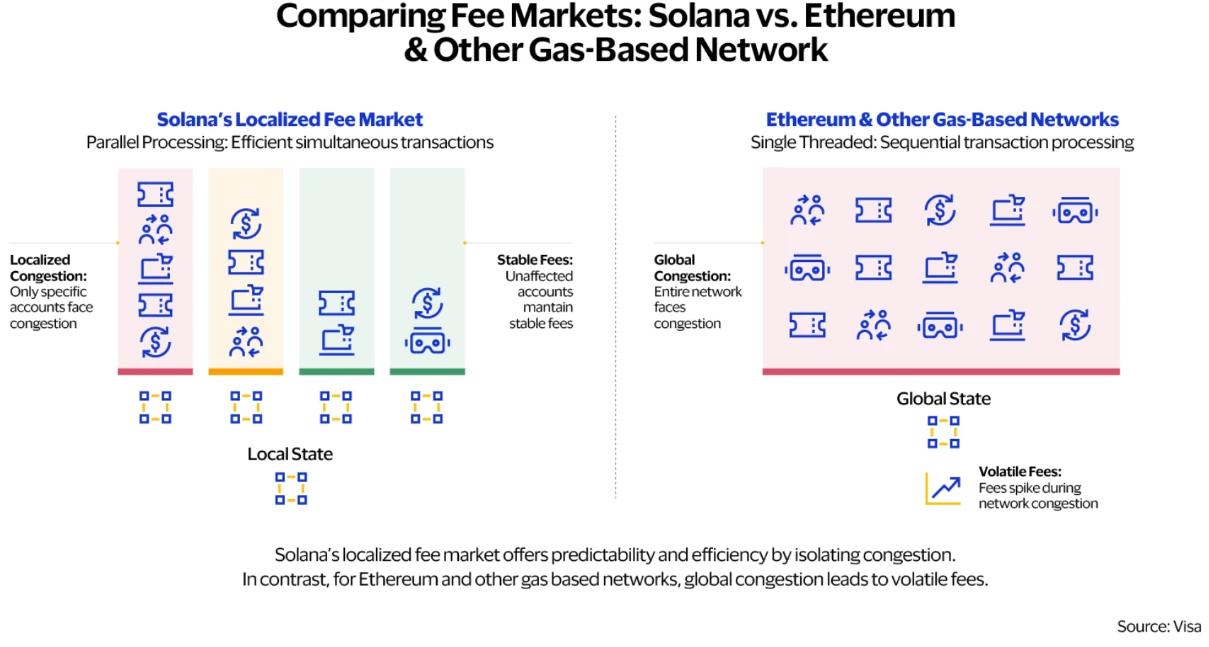
Solana's approach ensures that congestion in one account (e.g., Alice 's USDC balance) does not affect other accounts (e.g., Bob's USDC balance). If an account becomes busy due to high demand for a specific asset (such as an NFT), only that specific account’s fees will increase. Fees on other accounts are not affected by this congestion and remain stable. This creates a fee market that responds to use case needs. When demand for a particular asset surges, transaction fees for that asset temporarily rise. At the same time, the costs of other transactions on the chain are not affected. By allowing computations using different states to run in parallel, Solana can create fee markets based on "state contention" areas, rather than a single global fee market.
Transaction finality consumers expect
Transaction finality measures how quickly users can expect their operations to be confirmed on the blockchain network. For payments, transaction confirmation time is as important as network throughput. For example, Ethereum processes about 12 transactions per second on average, however, during periods of congestion, users may have to wait several minutes for transactions to be confirmed due to gas limits and smart contract requirements. Solana aims for each time period to be approximately 400 milliseconds, but can actually be between 500 and 600 milliseconds.
The vast majority of applications on Solana use "optimistic confirmation" to achieve finality . Optimistic confirmations are a mechanism used on the Solana blockchain to achieve finality before all validators (or entities responsible for generating a block) vote. With optimistic confirmation, a block can be considered valid if validators representing more than two-thirds of the delegated stake vote for it, and no optimistically confirmed blocks are rolled back or fail to be finalized. Finalized.
This mechanism allows Solana to achieve finality faster than many other blockchains. Completing transactions quickly provides a better payment experience. By comparison, Bitcoin can take up to 60 minutes to create six additional blocks before a transaction is considered secure and final. The figure below shows the block generation time of different chains.
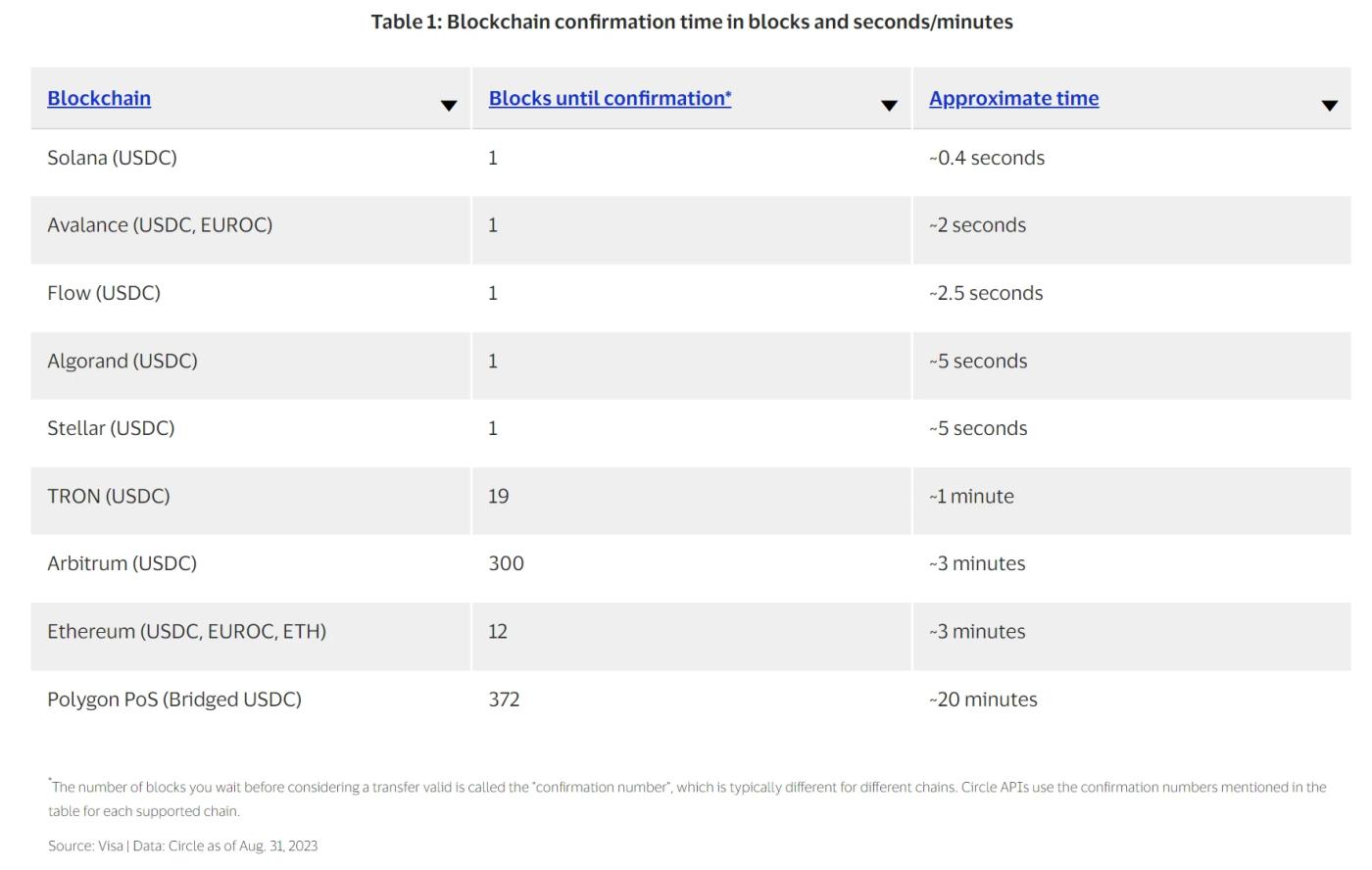
Availability: large number of nodes and multiple validator clients
A payment network only works if it is always available when users need to make a payment. For blockchain networks, availability is best measured by the number of independent participants, or nodes, that collectively run the network for consumers to initiate transactions.
As of July 2023, the Solana network has an impressive 1,893 active validators—the entities responsible for generating and voting blocks. Additionally, there are 925 nodes called RPCs, which may not create blocks themselves but maintain local records of transactions.
Having a large number of nodes in a blockchain network increases its resilience and redundancy. If some nodes experience problems or go offline, the network can still function without data loss as long as a sufficient number of nodes remain operational. The Solana community also focuses on diversity of node geography and infrastructure providers to make the network more resilient to events such as natural disasters or changes in provider access policies. The Solana network has nodes in more than 40 different countries and has hundreds of unique hosting arrangements and different locations. This helps ensure smooth and reliable operation of the network, even in the face of technical challenges.
A validator client is a software tool that enables node operators to act as validators on proof-of-stake blockchains. The diversity of validator clients increases the resilience of the network. While one client may have a bug or vulnerability, another may not. This ultimately reduces the likelihood of a single software flaw bringing down the network.
Solana initially uses only a validator client provided by Solana Labs. In August 2022, Jito Labs launched Jito-Solana, its second mainnet validator client. Shortly thereafter, Jump Crypto launched Firedancer (in beta), a standalone C++ validator client. Firedancer stands out for its potential to deliver significant performance improvements, as demonstrated by achieving 600,000 TPS in a live demonstration. The goal of having different validator clients is to maintain network stability. Besides Ethereum, Solana is one of the only chains to have multiple fully independent validator clients.
Meet modern needs
Solana's unique technical advantages, including high throughput for parallel processing, low cost for localized fee markets and high resilience for large numbers of nodes and multi-node clients, combine to create an attractive value proposition as a scalable blockchain platform for payments claim. These are among the reasons why we decided to expand our stablecoin settlement pilot program to the Solana network. As we pilot our stablecoin settlement functionality on Solana, we plan to test Solana’s ability to meet the needs of modern enterprise financial operations.




